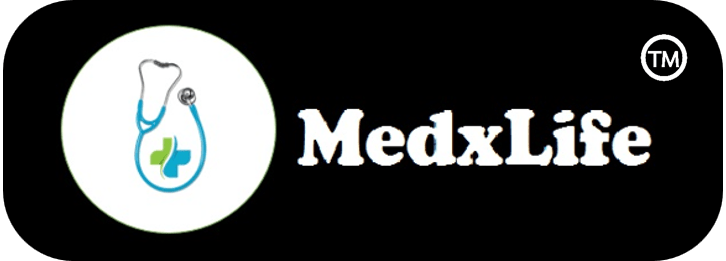INTRODUCTION-
The term ‘’Physiognomy’’ refers to features of face, to infer the relatively enduring character or temperament of an individual. In simple terms it is the mirror of inner and hidden aspect of a person which is not known to the outer world.
Lavater defines it as ‘’art or science of discerning the character of the mind from features of face , or the art of discovering the predominant temper or other characteristic qualities of mind by the help of forms of external physical forms of the body’’.
It is an ancient science which is studied in almost all civilization which can be traced back to 340 BC Hippocrates, Aristotle and many other stalwarts studied physiognomy and put forward their studies in a well-defined documentation.
It has significance in many fields, not only medicine but many fields of work involve physiognomy such as in art, entertainment industry (actors suited for a role is most of the time decided when their facial features match the script of the proposed movie, etc.)
We must remember in our life that face is the most mobile, versatile, flexible and powerful communication tool of ours. In our day-to-day life face is the first part of the body which attracts our attention seeking to encodes its message hidden behind the physical features in each individual.
In study of features of face, it is linked to attributes of the personality of an individual, some important features and its attributes are as follows-
1)High Forehead-High IQ.
2)Low Forehead-Low IQ.
3)Thin lips- Ascetic (person with strict self discipline).
4)Full lips- Sensual.
5)Dimples on face- Fun natured individual.
6)Wide spaced eye- Trust worthy.
7)Too closely set eyes-Circumspection (prudent individuals).
8)Hooked nose- Threatening personality.
9)Pug nose- It appears cute but it denotes the weakness of determination and strong will.
10)Weak chin- Lack strength and determination.
11)Jutting chin- Leadership in an individual.
So, these are few physiognomic evaluations which helps in study the overall personality as well as nature of an individual which is not shown on front but is part of core personality in general terms.
Emotionally, the face is mightier than the word. Winkleman quoted ‘’The mind is invisible to those who understands not the body of physiognomy’’.
SIGNIFICANCE OF FACIAL SIGNS IN DISEASE-
Facial signs act as predictors as well as reflectors of disease as certain diseases can alter the expression or appearance of the face because disease process is related to the development or the physiology of the face and affects its structure or behaviour or both. The best illustration of how emotion disturb physiology and anatomy of face is by observing the changes when a person frowns.
1)PREDICTOR-
Since ancient times physiognomists believed that each face could predicts its owner future. As Sir Ben Johnson quoted ‘’Man is read in his face’’. On the basis of shape of face and contour several disease conditions are predicated also certain facial expressions and behaviours like glaring, certain emotional expressions correspond to personality types in individuals and if anger expression is present in an individual predominantly shows its susceptibility to cardiovascular diseases. Similarly, if an individual is dolichocephalic in face appearance most likely to suffer from peptic ulcer, while if they are brachycephalic , they may suffer from gall bladder problems. Facial features which an individual inherits from their parents not only shows the lineage but also many associated conditions which may show up in their life in later years. Certain facial anomalies like ears with joint lobes, hair whorls, wide spaced eyes, etc. are studied to be linked with mental disorders (schizophrenia, etc.) as well as physical characters, etc.
Study of facial features, expressions as well as structural symmetries and deviation within them can help us to predict many diseases in their early diagnostic stage as well as susceptibility to various systemic diseases can be studied and prevented in such individuals.
2)REFLECTOR-
Marked relationship between facial features and many genetic as well as congenital diseases are well established and many a times act as a tool of diagnosis in clinical practice. Conditions like Down’s syndrome, Lesh-Nyhan syndrome, etc. all such genetic syndromes produce specific patterns of facial anomalies in addition to congenital diseases like cretinism, hydrocephaly also produces facial sign of their presence in an individual. In sphere of mental and emotional disorders it is often marked that behavioural expression of face can be different from normal as per the anomaly or the suffering of the individual.
In conclusion we must remember the lines of Dr Paul Ekman ‘’In a sense, the face is equipped to lie the most and leak the most, and thus can be a very confusing source of information’’. So, facial expressions and features should not be studied in isolation but always together with other body signals for comprehensible goal of complete cure of the sick individual.
Contributor – Dr. Apurva Varangi



This is a very interesting and informative blog on physiognomy and disease. I learned a lot from reading it. I especially liked the examples of how facial features are linked to personality traits and emotions. I wonder how accurate physiognomy is in predicting or diagnosing diseases. Do you have any scientific evidence or studies to support your claims? I would love to read more about this topic. Thank you for sharing your knowledge and insights. Please keep writing more helpful blogs like this.